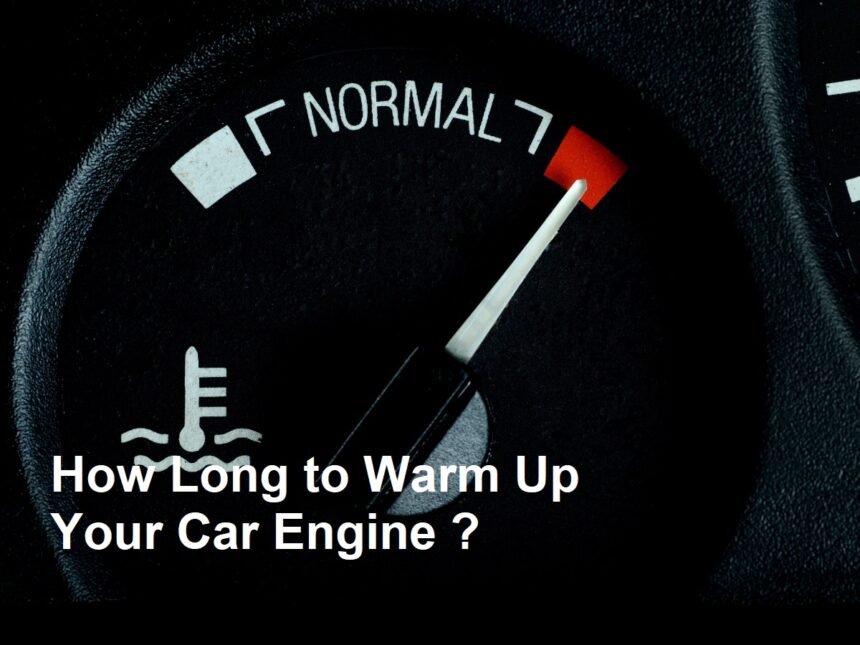Introduction
Warming up a car engine before driving has been a common practice for decades, especially in colder climates. The idea is to let the engine reach its optimal operating temperature to ensure smooth performance, fuel efficiency, and the longevity of vehicle components. However, in recent years, advancements in automotive technology and engine design have sparked debates about whether different types of vehicles require varying warm-up times and how drivers can accurately judge when their engine is ready for use.
This article explores whether the warming-up period depends on the type of vehicle and discusses signs that indicate the engine has sufficiently warmed up.
1. Does the Warm-up Time Vary Based on Vehicle Type?
Engine Size and Design
One of the key factors affecting warm-up time is the engine size and design. Larger engines, such as those in trucks or SUVs, tend to take longer to reach the optimal temperature because they have more mass and require more time and energy to heat up. Conversely, smaller engines in compact cars or hybrid vehicles typically warm up faster due to their lighter weight and different cooling systems.
Fuel Type
The type of fuel also influences warm-up duration. Gasoline engines usually warm up quicker than diesel engines, especially in cold weather. Diesel engines often have higher compression ratios, which means they generate more heat during combustion. As a result, diesel engines may require a longer warm-up period to reach optimal operating temperature.
Engine Technology and Modern Features
Modern vehicles equipped with fuel-injection systems, turbochargers, and electronic controls tend to warm up more efficiently than earlier models with carburetors and mechanical components. Many contemporary cars are equipped with engine management systems that optimize performance during warm-up, reducing the need for prolonged idling.
Climate and Ambient Temperature
Ambient temperature plays a crucial role. In colder climates, engines take longer to warm up due to the lower temperature of the surrounding air. Conversely, in warm weather, engines reach their ideal temperature more quickly. Therefore, warm-up times can vary significantly depending on the environment.
2. How Long Should You Warm Up Different Types of Vehicles?
Conventional Internal Combustion Engines
In older models or vehicles without advanced electronic systems, it was common to idle the engine for 5 to 10 minutes in cold weather. This allowed the oil to circulate properly, the coolant to warm up, and the engine components to expand to their proper sizes.
Modern Vehicles
Today, most experts recommend that modern cars only need a quick warm-up—about 30 seconds to 1 minute—before driving gently. Modern engines and lubricants are designed to operate efficiently at lower temperatures, and excessive idling can be counterproductive.
Heavy-Duty Vehicles and Diesel Engines
Heavy-duty vehicles and diesel-powered trucks typically require longer warm-up times, often 10 minutes or more, especially in cold weather. They may also benefit from block heaters or engine pre-heating systems, which can significantly reduce warm-up time.
3. How to Recognize When Your Engine Is Warm Enough
While the ideal warm-up time can vary, there are clear signs that your engine has reached its proper operating temperature:
1. Warmed-up Dashboard Indicators
Most modern vehicles have temperature gauges on the dashboard that show engine temperature. When the needle reaches the halfway mark or the “normal” zone, it indicates that the engine is warm.
2. Heater Performance
A car’s heating system relies on hot coolant circulating through the heater core. When the heater starts blowing warm air, it’s a sign the engine coolant has warmed up sufficiently.
3. Oil Viscosity and Liquids
When the engine is cold, oil is thicker and may make the engine sound noisier. As it warms up, the oil becomes less viscous, providing better lubrication. When you notice smoother operation and quieter engine sounds, the vehicle is likely warmed-up.
4. Engine Behavior
When the engine runs smoothly without misfires, rough idling, or stalling, it indicates proper warming. Cold engines tend to run rough or vibrate during initial startup.
5. Idle RPM
Modern vehicles often idle at a higher RPM during warm-up and then gradually settle to the normal RPM once the engine reaches the desired temperature.
Conclusion
Warm-up times are indeed influenced by the type of vehicle, engine size, fuel type, climate, and technological features. While older vehicles and diesel engines may require longer warm-up periods, modern cars generally need only a brief period of idling before driving gently. Recognizing the signs that your engine is warmed-up—such as gauge readings, heater performance, and engine smoothness—can help you prevent unnecessary idling and ensure your car runs efficiently.
Ultimately, following your vehicle manufacturer’s recommendations and paying attention to the engine’s signals are the best ways to determine when it’s ready for active driving, leading to better performance and longer engine life.












